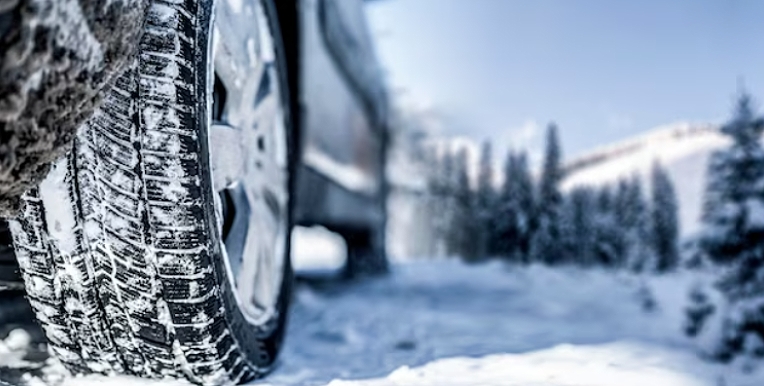
How to choose winter tires on the secondary car market
Seven useful tips when choosing used winter tires...
Zima is a time of year when roads can be very dangerous due to snow, ice and cold weather. In such conditions, high-quality winter tires become an integral part of safe and comfortable driving. But not everyone has the opportunity or desire to buy only new sets of winter tires. Some rightly believe that it is quite possible to purchase used products. In this article, we will look at why winter tires are so important, what advantages they provide to a car, and give some tips for independently choosing winter tires on the secondary car market.
Winter tires and their main features
Winter studded tires differ from summer tires due to the tread design, which is designed to improve driving on snow, ice and wet roads, as well as the presence of special studs that provide driving safety under adverse weather conditions.
Key features of winter tires include:
- Improved strength and stability: Winter tires have a more durable construction and wear-resistant materials, allowing them to withstand harsh winter conditions.
- Increased number of channels: Winter tires have more channels that help them pass through snow and snow layers while improving contact with the road.
- Optimal steering control: Winter tires provide better vehicle control on slippery or icy roads, making them an integral part of safe driving in winter conditions.
The benefits of quality winter tires
Quality winter tires offer many benefits that can save your life and help you avoid accidents:
- Improved Security: Quality winter tires provide better control of your vehicle and improve its ability to drive on snowy, icy or wet roads. This significantly reduces the risk of accidents and incidents.
- Acceleration and deceleration acceleration: Quality winter tires allow your vehicle to accelerate and brake faster on ice or snow, which improves reaction time and improves driving safety.
- Increased resource: Quality winter tires will wear out less than cheap or old tires, which can save you money in the long run.
- Improved driving comfort: Quality winter tires provide a smoother, more comfortable driving experience in adverse road conditions.
Tips for choosing used winter tires
- First tipWhat needs to be highlighted is the need to pay attention to the date of manufacture of the tires. Most manufacturers offer a five-year warranty, and the older the tire, the more its performance deteriorates. That is, it begins to “dumb” and is no longer so safe. So pay attention to this. Each tire has 4 numbers that indicate the week and year of manufacture. Therefore, keep an eye on this nuance before choosing used winter tires.
- Second tip — look at the tread depth. As a rule, the tread depth on winter tires is somewhere between eight and a half and nine and a half millimeters. That is, such winter studded bush tires It makes sense to purchase if the tread depth is about four to five millimeters, so that it is enough for at least one season. If the tread depth is less than four to five millimeters, you should not buy such tires, because they are unlikely to last until the end of the season, and, most likely, you will have to “change your shoes” again.
- Third tip, which is very important. Check the tire in different places around. It is important that there is equal wear everywhere, approximately the same tread depth.
- Fourth tip, which you should pay attention to - be sure to check for things such as cracks, irregularities, hernias, and various bumps. Run your hand over the tire to see if there are any bumps, hernias or similar defects. If there is a metal wire sticking out, then you should abandon such tires. If there is rubber dust inside the tire, then it is also better not to take it, because, most likely, this tire has already been repaired. It is clear that it is better to take those tires that cannot be repaired.
- Fifth tip concerns the uniformity of tread wear. If some part of the tire is more worn out, say the left one, then this indicates that the previous owner had some problems with the car’s chassis, or the wheel alignment was not set correctly. So pay attention to this. If more than the middle, middle part of the tire is worn out, then this means that the person drove on overinflated wheels, most likely saved fuel, and therefore the tires became worn out.
- Sixth tip concerns completeness. Buy tires from one set. It is advisable not to combine different products, let’s say combine winter tires and all-season tires, because it is not clear how they will behave later on the road in some critical situation.
- Seventh tip will help you save some money and provide you with a wider choice. Try to buy tires in advance, not in winter, but at least in autumn. The available assortment decreases for winter. When winter comes, such tires are dismantled, and choosing a decent option is much more difficult.
Some people believe that used winter tires are not exactly the best option to buy. And indeed, some people cannot save at all with such a purchase. Although in many cases, purchasing used tires can actually save you a lot of money. The main thing is not to buy what catches your eye first and to deal with people and organizations that sell such tires on a regular and professional basis.




